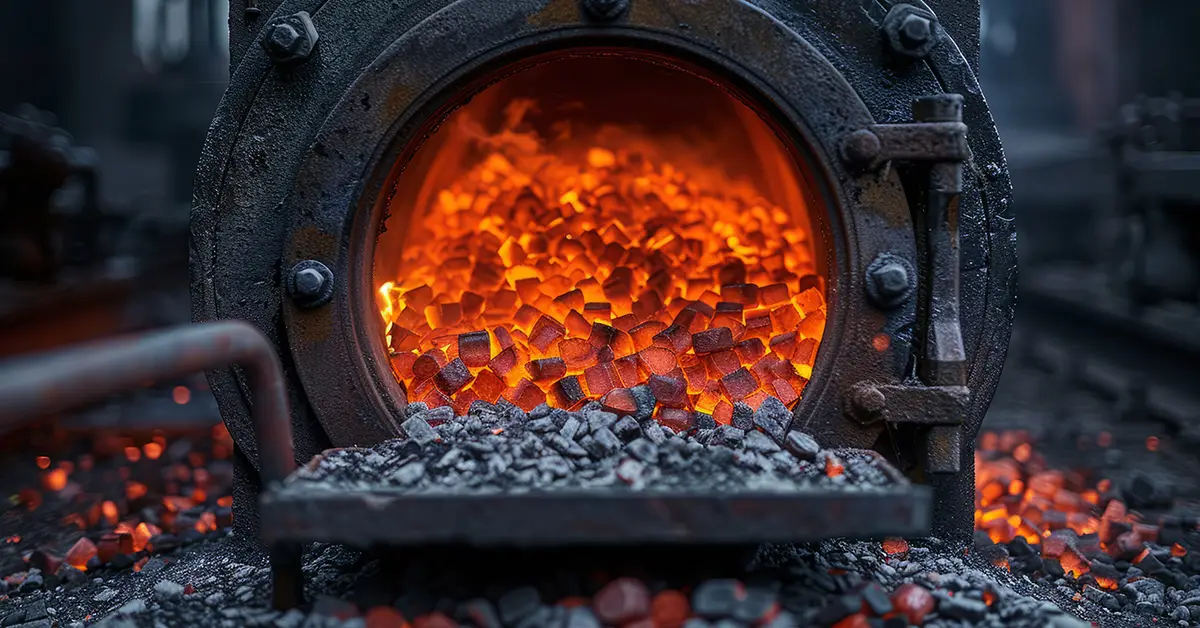What Is the Burning Furnace in the Bible?

What Is the Burning Furnace in the Bible?
The phrase “burning furnace” in the Bible has long stirred debate, especially among those trying to use it to justify either Eternal Conscious Torment (ECT) or Annihilationism. But is the furnace really about eternal torture or instant destruction? Or is something much deeper and more beautiful happening in these passages?
Let’s dig through the fire, the smoke, and the fear-based interpretations, and find the truth that burns at the center of this biblical imagery.
Old Testament Foundations: The Furnace Is About Covenant, Refinement, and Deliverance
Before the New Testament ever mentions a “furnace of fire,” the image is already glowing with meaning in the Hebrew scriptures.
“A smoking furnace” in Genesis 15:17
“When the sun had gone down and it was dark, behold, a smoking fire pot and a flaming torch passed between these pieces.”
This was the moment God made a covenant with Abraham. The smoking furnace was not about wrath or hell, it was a manifestation of God’s presence passing between the sacrificed animals, confirming His unbreakable promise. The fire was covenantal, not condemning.
The mountain that burned in Exodus 19:18
“Now Mount Sinai was all in smoke because the LORD descended upon it in fire… and the whole mountain quaked violently.”
Again, God shows up like a furnace. And yes, it’s terrifying. But this isn’t punishment, it’s revelation. The fire doesn’t consume the people, it awakens them. The furnace image here is a theophany, not torment.
The furnace of slavery in Deuteronomy 4:20
“But the LORD has taken you and brought you out of the iron furnace, out of Egypt…”
Egypt is metaphorically called a furnace, a place of affliction and bondage. Yet what does God do? He delivers them through it. The furnace was never final. It was a trial, and through that trial, came liberation.
The fiery furnace in Daniel 3
Nebuchadnezzar’s furnace was very real. But when Shadrach, Meshach, and Abednego were thrown into it, something astonishing happened. They were not burned, they were freed from their bonds, and a fourth figure, like a son of the gods, was with them.
The fire didn’t destroy them.
It liberated them.
It revealed God’s presence.
New Testament Usage: The Parable of the Furnace
Now let’s deal with the furnace language in the New Testament, specifically the most cited passage by ECT and Annihilationist teachers.
Matthew 13:42
“And shall cast them into a furnace of fire: there shall be wailing and gnashing of teeth.”
This is where the fearmongering begins. But look again, this verse is from a parable. Jesus is speaking in metaphor. Parables are layered, symbolic stories meant to hide truth from the proud and reveal it to the humble.
So what is this “furnace of fire” symbolizing?
If you read the chapter in context, it’s the end of the age, the harvest, the separation of weeds and wheat. It’s an apocalyptic unveiling, not a cosmic torture chamber.
Three Interpretive Errors, and the Truth They Miss
- The ECT Error:
The traditionalist wants to turn this into literal, eternal flames of conscious torture. But that assumes a definition of “fire” that ignores its Old Testament meaning and strips it from the metaphorical context of Jesus’ own parables. 🔥 If this is literal, then God is a cosmic arsonist. But if it’s metaphor, then He is a consuming fire of refinement and restoration, not retribution. - The Annihilationist Error:
Others swing the pendulum and say the fire means instant destruction, the soul is simply burned to ash. But again, that misses the pattern. In every Old Testament example, the fire either purifies, reveals God, or brings about deliverance. Not one example supports total annihilation. 🔥 If God’s fire destroys souls forever, then He is not a refiner. He is an executioner. And yet Scripture says, “He is a consuming fire”, not a finishing fire. Consuming means transformative, not final. - The Literalism Trap:
The problem with both views is literalism. When Jesus said “pluck out your eye” to avoid Gehenna, did He mean to actually blind yourself? No. Then why assume the “furnace of fire” is literal? It’s symbolic of judgment, yes, but not the kind of judgment that ends in despair. It’s the kind of judgment that restores what was lost.
The Fire Is a Tool, Not a Threat
Throughout the Bible, fire is God’s tool for:
- Testing faith (1 Peter 1:7)
- Purifying like gold (Malachi 3:2-3)
- Revealing His presence (Exodus 3:2, Daniel 3:25)
- Burning away chaff, not people (Matthew 3:12)
🔥 The fire is aimed at the dross, not the gold.
If the Furnace Is Final, Grace Isn’t
If we say the “burning furnace” represents final destruction or eternal torment, we make grace temporary.
We declare that sin outlasts mercy, and that God’s love fails to redeem those He created.
But Scripture says:
“His mercy endures forever.”
“Love never fails.”
“Our God is a consuming fire.”
“He makes His ministers a flame of fire.”
What does He consume?
Not souls.
Not people.
But pride, falsehood, corruption, and idolatry, so that what is eternal may remain.
The Glorious Furnace: A Divine Refinery
So what is the burning furnace?
It’s not hell.
It’s not annihilation.
It’s not the final death sentence for the damned.
It’s the glorious forge of God, where impurities are burned off, chains are melted, and true sons and daughters emerge from the flames, refined, awakened, and restored.
The burning furnace is not your end.
It’s your beginning.
- 08/25/2025
- WRITE A COMMENT
Recent Posts
- The Eternal False Translation: How Aionios Was Corrupted Into Eternal
- The Rich Man and Lazarus
- Does Grace Last Forever?
- His Love Never Fails
- Love and Forgive Your Enemies
- His Mercy Endures Forever
- Scriptures That Teach Universal Reconciliation
- The Lesson of James, Peter and John
- Progressive Salvation is Biblical!
- The Gates Never Shut!


